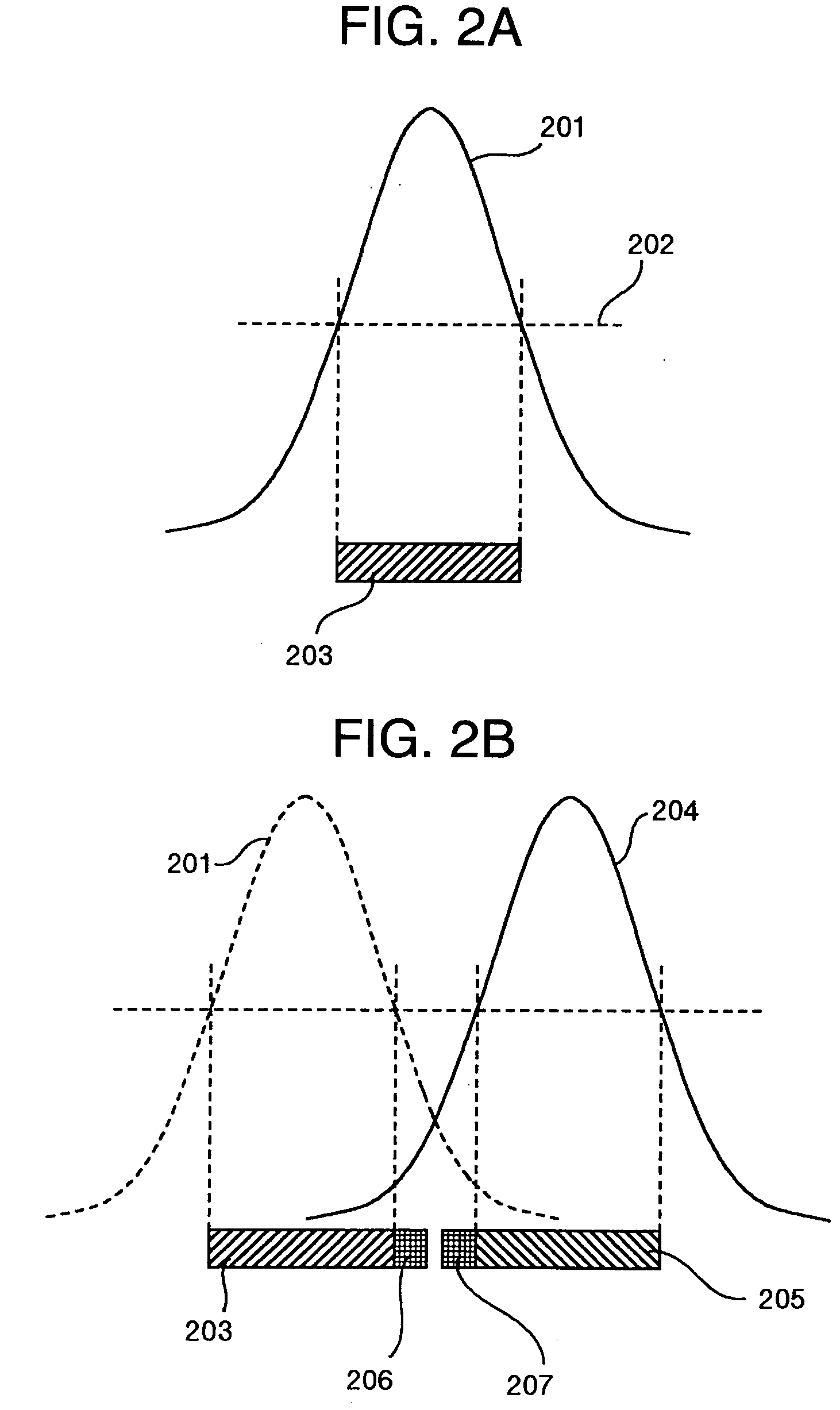Method of fabricating devices and observing the same
a technology of device and pattern, applied in the direction of recording strategy, semiconductor/solid-state device testing/measurement, instruments, etc., can solve the problems of reducing the yield of patterns and devices to be fabricated, degrading the reproducibility of fabrication, and affecting the quality of the device, so as to save time and cost, observe easily, and prepare samples easily
- Summary
- Abstract
- Description
- Claims
- Application Information
AI Technical Summary
Benefits of technology
Problems solved by technology
Method used
Image
Examples
embodiment 1
[0087] A ROM substrate of an optical disk was fabricated using the method set forth so far.
[0088] A medium having a structure shown in FIG. 5A was fabricated and on trail, an amorphous mark was recorded by irradiating a laser beam on the medium. All of films stacked on a glass substrate 501 were formed through sputtering process. Protective films were of SiO2 and with a view to improving adhesiveness between lower SiO2 protective film 503 and recording film 505, a ZnS.SiO2 film 504 was interposed. A Ag layer 502 is adapted to diffuse heat generated in the recording film under the irradiation of the laser beam. This medium was heated at 300° C. for 3 minutes in a baking oven to crystallize the recording film 505 as shown at 507 in FIG. 5B. Under this condition, a laser beam having a wavelength of 400 nm was irradiated on the medium from upper part in the drawing through an objective lens of an numerical aperture of 0.9 so as to be focused on the recording film of the medium, so that...
embodiment 2
[0093] The present technique was used to produce on trial a thin line pattern with a laser beam.
[0094] A sample was prepared, having a structure as shown in FIG. 7A. This sample was placed in an oven and annealed at a temperature of 300° C. for 2 minutes to crystallize a recording film as shown at 704 in FIG. 7B. An ArF laser beam having a wavelength of 193 nm was focused on the sample through an objective lens having a numerical aperture of 0.8, so that while dissolving the recording film 704, a spot was scanned to produce an amorphous line and space (L&S) pattern 705 having a width of 50 nm. Laser power was 0.5 mW and the scanning speed was 1 m / s. The sample formed with the pattern is shown in sectional form in FIG. 7C and in top view form in FIG. 7D. Subsequently, an amorphous pattern 706 was recorded in the same manner as the pattern 705 in a direction orthogonal to the parallel pattern 705. At that time, the periphery of the pattern 706 was recrystallized. Accordingly, the pat...
embodiment 3
[0099] In this embodiment, production of a pattern by an electron beam was tried.
[0100] A medium was prepared, having a structure as shown in FIG. 8A. Recording film 802 and Si film 803 were formed on a Si substrate 801 by sputtering. The protective film was made of Si because conductivity was necessary for an electron beam to reach the recording film. In this embodiment, Ge2Sb2Te5 was used for the recording film.
[0101] The recording film of this sample was irradiated with the laser beam so as to be crystallized by half as shown in FIG. 8B. As a result, the recording film of the sample was bisected to crystalline region 804 and amorphous region 805.
[0102] An electron beam to be focused on the recording film was irradiated from upper part in the drawing in order that a pattern could be produced by Joule's heat generated by a current passing through the recording film. In the crystalline region 804, the recording film was molten with the electron beam subjected to 25 kV acceleratin...
PUM
| Property | Measurement | Unit |
|---|---|---|
| width | aaaaa | aaaaa |
| size | aaaaa | aaaaa |
| size | aaaaa | aaaaa |
Abstract
Description
Claims
Application Information
 Login to View More
Login to View More - R&D
- Intellectual Property
- Life Sciences
- Materials
- Tech Scout
- Unparalleled Data Quality
- Higher Quality Content
- 60% Fewer Hallucinations
Browse by: Latest US Patents, China's latest patents, Technical Efficacy Thesaurus, Application Domain, Technology Topic, Popular Technical Reports.
© 2025 PatSnap. All rights reserved.Legal|Privacy policy|Modern Slavery Act Transparency Statement|Sitemap|About US| Contact US: help@patsnap.com



